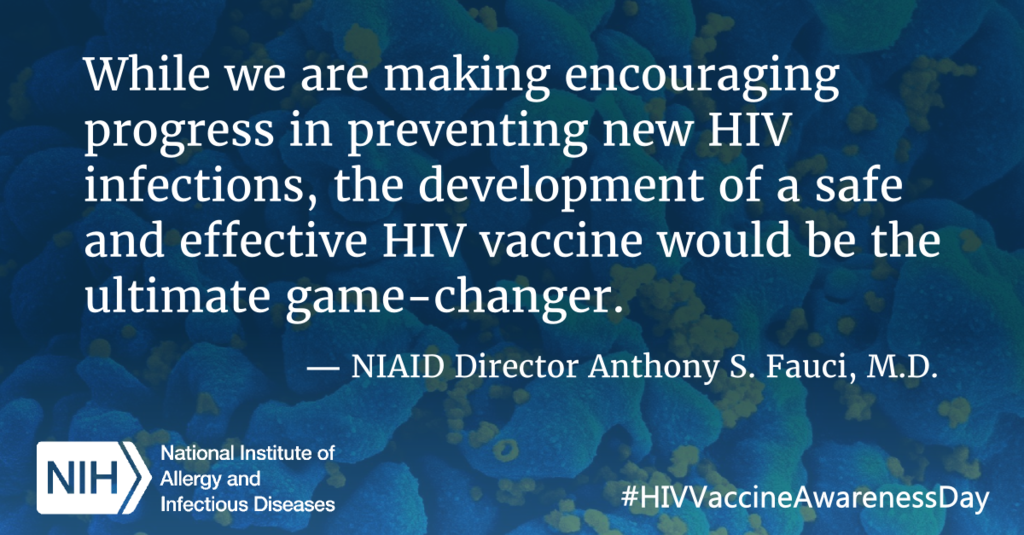NIAID, CC BY 2.0, via Wikimedia Commons
Results recently published from a small-scale, early-stage clinical trial have found a HIV vaccine candidate which successfully induced an antibody response in 35 out of 36 participants (97%). This result, although only observed on a small scale, could prove to be an important step in the development of a vaccine effective against HIV.
The human immunodeficiency virus (HIV) targets cells of the immune system in infected individuals, leading to weakening of their immune response.
As more immune cells are destroyed by the virus, infection can eventually lead to acquired immunodeficiency syndrome (AIDS), which describes a number of potentially life-threatening infections that can be contracted when the immune system has been damaged by HIV.
Since the first reported cases in 1981, HIV has consistently presented a significant global health issue, with HIV-related causes leading to the death of 650,000 people in 2021.
There are two forms of HIV: type 1 (HIV-1) and type 2 (HIV-2). The more pathogenic HIV-1 form accounts for over 95% of infections worldwide, whilst HIV-2 characteristically has lower transmissibility and reduced likelihood of progression to AIDS.
Viral transmission occurs through contact with certain bodily fluids of infected individuals, such as blood, breast milk, semen, and vaginal fluids.
To result in infection, HIV present within these fluids must enter the bloodstream either through a mucous membrane (found in the rectum, mouth, vagina, or tip of the penis), through open cuts, or by direct injection (for example through the sharing of a needle).
Once present in the bloodstream, HIV can target the cells of the immune system.
Specifically, the cells affected are white blood cells known as CD4 cells, which help coordinate the immune response to infection by activating other immune cells to destroy the pathogens. The infection of CD4 cells by HIV begins with the virus binding to a specific receptor protein on the cell surface.
The envelope (outer membrane) of the virus then fuses with the CD4 cell membrane. This allows the viral contents to be released into the host cell. The contents of the virus include RNA (a single strand of genetic material, the viral equivalent of DNA), enzymes required for replication such as reverse transcriptase and integrase, and other viral proteins.
Viral double stranded DNA is then formed and inserted into the human DNA of the host cell. The machinery of the host CD4 cell is then used to produce new viral RNA and proteins, which exit the cell nucleus and move to the cell surface. Here the RNA and proteins are arranged into immature (non-infectious) HIV, which push out of the host cell and result in the death of the host CD4 cell.
The immature virus eventually develops into the mature, infectious form which can infect further CD4 cells.
Indeed, the complexity of the HIV replication cycle represents one of the main barriers to vaccine development. The cycle is rapid and error-prone, hence frequently producing mutated copies of HIV. This leads to the vast genetic diversity of HIV, and any vaccine would have to be effective against this wide variety of viral strains.
Other barriers faced include the complex method of immune evasion by HIV and the fact that HIV doesn’t induce a significant immune response.
But a vaccine to prevent infection by the virus is essential given that, once contracted, current treatments cannot cure the virus. This means that individuals infected tend to have the disease for life.
The current treatment for HIV is combination antiretroviral therapy (cART), which involves the administration of a cocktail of antiretroviral drugs (ARVs).
Although not curative, this treatment can reduce the amount of HIV in the blood to such a level that the virus is not transmissible, and the immune system of the individual continues to function. This allows the individual to live a relatively healthy life despite having HIV.
Despite the challenges faced, results from this trial, in which a relatively novel approach to vaccination was investigated, have yielded encouraging results.
Professor Juliana McElrath and colleagues at the University of Washington investigated a vaccine able to stimulate ‘broadly neutralising antibodies’(bnAbs). These are antibodies which are effective against parts of the virus which show little variation between different viral strains, hence combatting the issue of the vast genetic diversity of the virus.
Specifically, the bnAbs bind to a glycoprotein on the surface of HIV which mediates entry of the virus into host cells. bnAbs are produced by B cells (another type of immune cell) and acquire affinity-enhancing mutations when a B cell matures from the naïve (or germline) state.
Therefore, this new vaccine stimulates B cells to produce HIV-specific bnAbs and represents the first in-human test of germline targeting.
In the trial, 36 participants received either two low or two high doses of the vaccine, administered 2 months apart, whilst a further 12 were injected with a saline solution as a placebo group.
At the end of the study, it was found that of the participants who received the active vaccine (either low or high doses), 97% possessed HIV-specific bnAbs. The antibody levels were similar between those who received low and high doses of the vaccine, but marginally higher in those who received the high doses.
It is currently unclear whether the bnAbs will protect against HIV in those that have contracted the disease, and further investigation will be required to resolve this issue.
These results, albeit on a small scale, provide proof of concept for this vaccination strategy. The potential of application to other targets in HIV, as well as to other pathogens, may lead to this being a significant breakthrough.





